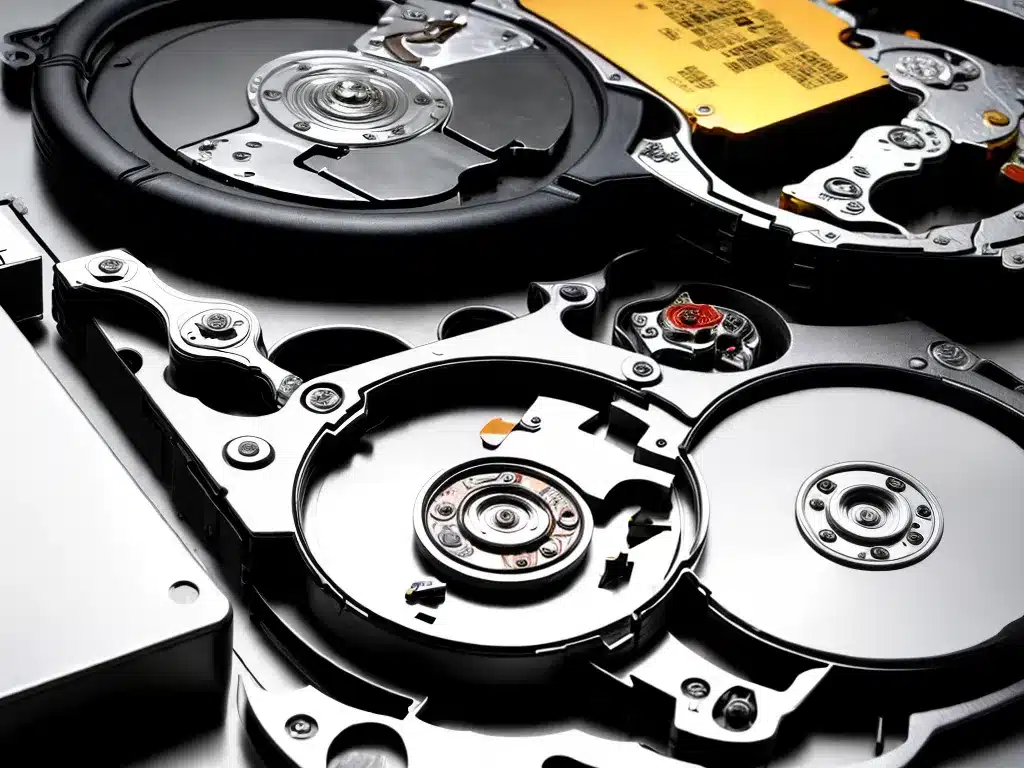Introduction
Hard drives can become damaged and inaccessible for a variety of reasons – from mechanical failure, malware, accidental deletion, or physical damage. When this happens, the data stored on them can become lost or corrupted. Recovering those lost files from a damaged drive is possible, but can be challenging. In 2024, data recovery technology will have advanced, making file recovery from damaged drives more successful.
Causes of Hard Drive Damage
There are several common causes of hard drive damage that can result in inaccessible or lost data:
Mechanical Failure
The mechanical components inside a hard drive can fail, leading to inaccessibility. Common failures include:
-
Failed read/write heads – The heads that read and write data to the platters can cease to function.
-
Motor issues – The spindle motor rotating the platters can fail.
-
Degraded platters – The platters storing the data themselves can become damaged.
Mechanical failure often occurs due to general wear and tear over time.
Logical Corruption
The file system structures and other logical data components on a drive can become corrupted:
-
Accidental deletion – Files may be deleted and the space reused. The underlying data may still exist.
-
Virus or malware infection – Viruses and malware can damage the file system and overwrite or encrypt files.
-
Partition loss – The partitions keeping file system data organized can be lost or damaged.
-
Bad sectors – Portions of the physical platters can go bad, leading to inaccessible data.
Logical damage is often repairable through advanced recovery techniques
Physical Damage
External physical damage can occur to a hard drive:
-
Impact damage – From dropping a portable external drive.
-
Water damage – From submerging the device in water.
-
Fire or heat – Excessive heat can damage the platters and components.
Physical damage can severely compromise the recoverability of data.
Hard Drive Recovery in 2024
By 2024, advanced techniques and technology improvements will exist to improve the chances of successfully recovering lost data from even severely damaged drives.
Advanced Recovery Techniques
Data recovery experts will have cutting edge techniques to access failing drives and reconstruct damaged data. Methods include:
-
Platter swapping – Moving platters from a damaged drive into a working chassis to access data.
-
Advanced electronics – Using specialized equipment to adjust drive parameters and communications.
-
Data structure reconstruction – Rebuilding corrupted partition tables, file systems, and directories through advanced algorithms.
-
Imaging and cloning – Creating full sector-by-sector duplicates of drives for safe analysis.
Improved Data Analysis Capabilities
Improved scanning equipment and software will help better analyze drive contents:
-
Enhanced scanning microscopy – To better examine platter surfaces at very high magnifications.
-
AI-assisted reconstruction – AI will help reconstruct files through pattern recognition and prediction algorithms.
-
Bit-level analysis – Data will be reconstructible at granular bit-level scale.
Component Improvements
Advances in hardware technology will improve physical data recovery capabilities:
-
Higher capacity platters – With narrower tracks and Tb/in2 densities, more data will be recoverable from smaller functioning areas.
-
Clean room standards – Strict ISO standards will further avoid dust contamination during platter access.
-
Failure-tolerant components – Components like read/write heads and motors will become more robust and failure resistant.
File Recovery Process
The general file recovery process from mechanically damaged hard drives will remain similar, while utilizing improved techniques:
Initial Evaluation
The drive failure mode and extent of damage will be assessed:
- Physical damage will be inspected and imaged if possible.
- Electronics faults will be diagnosed.
- Scope of logical file system corruption will be determined.
An initial feasibility estimate and cost estimate will be provided.
Data Extraction
Data will be extracted using appropriate techniques:
- Logical recovery will attempt to access the file system.
- Mechanical repairs may be done to access platters.
- Physical cloning or imaging will capture full sector-level data.
Extraction will focus on areas where damage is minimal.
File Reconstruction
Extracted data will be processed to reconstruct files:
- File system structures will be rebuilt.
- File formats will be analyzed.
- Raw bit-level data will be parsed.
- Pattern recognition will help match data fragments.
Well-documented file formats will have higher success rates.
Verification
Recovered files will be verified for integrity:
- Hash values, checksums, dates, and metadata will be checked.
- File contents will be manually inspected.
- Customer will provide feedback on critical file recovery.
Attempts will be made to reconstruct portions of corrupted files.
Choosing a Data Recovery Service
To maximize chances of success when recovering lost files from a damaged hard drive, a reputable data recovery service should be used. Here are best practices for 2024:
-
Research experience and capabilities – Select a service with strong technical expertise, capabilities and verifiable results.
-
Avoid DIY attempts – DIY attempts can often compound damage and lower chances of professional recovery.
-
Get quotes upfront – Obtain clear quotes for costs, recovery probability, and timeframe.
-
Understand policies – Clarify policies on confidentiality and processes for unrecoverable data.
-
Check security standards – Ensure the service follows best practices for securing and handling your data.
-
Look for certification – Services certified through programs like ISO 9001 will follow stringent procedures.
Conclusion
Hard drives will continue to suffer from physical, logical, and mechanical damage resulting in inaccessible data. But by 2024, advanced techniques like platter swapping, improved imaging, AI-assisted reconstruction, and enhanced clean room environments will enable higher success rates in recovering critically important lost files, photos, and documents from even severely damaged hard drives. With proper care in selecting a qualified recovery specialist, the likelihood of recovering valued data from failed drives will be better than ever.













